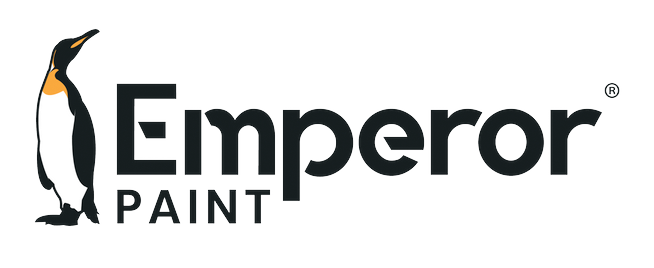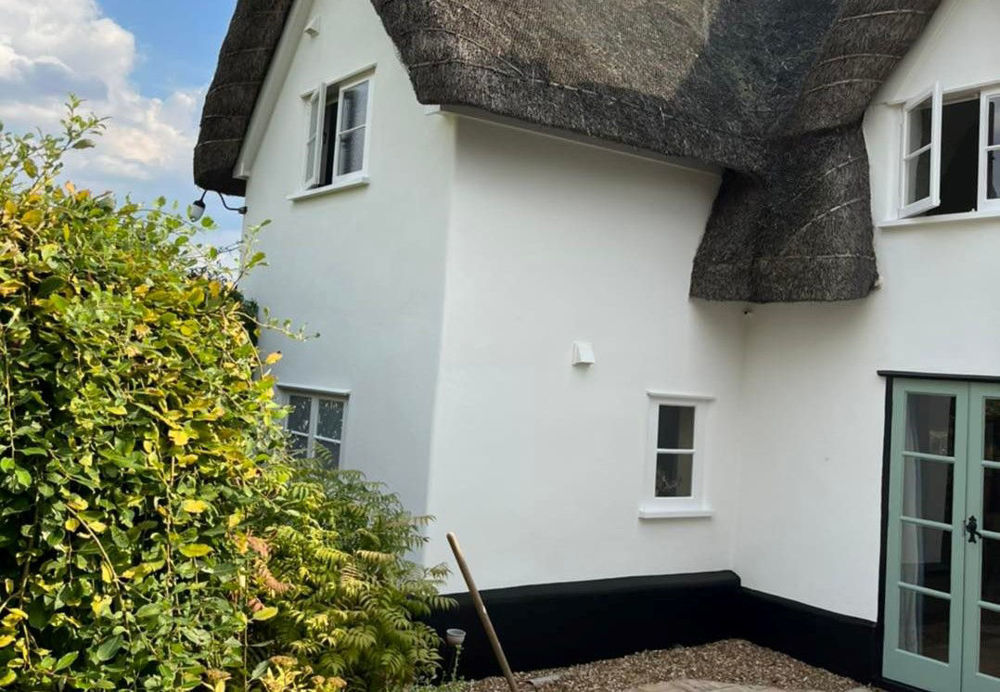
Render is one of the most common exterior surfaces that homeowners want to paint, but with so many types of render it can often be difficult to know exactly how to go about it. That is why we've put together our complete guide to painting render that contains everything you need to know before you get started.
A Guide To Render
The exterior walls of properties can come in a wide range of forms, including natural brick, stone or concrete. One of the most popular forms of external finish especially in the UK however is external render. Render is a form of external wall plaster that is applied to the masonry of properties to provide added protection from weathering and to leave an attractive finish to the property.
Like all building materials, not all render is made the same and can vary widely in terms of look, composition and performance. The most common types of render in the UK are:
- Conventional render - conventional render, often known as sand and cement render, is the most common form of render you will come across. It is a relatively unexpensive render that can be applied easily, which is why it is a popular choice for rendering projects. On the negative side, a sand and cement mix is less advanced than other forms of render, as it can uptake moisture, has low breathability and is rigid which can cause cracking due to movement. Furthermore, sand and cement does not come pre-coloured, meaning it is almost always painted to leave an attractive finish.
- Silicone render - silicone render is a more advanced form of render which has higher breathability than standard sand and cement render, while also having water repellent properties due to added silicone. This provides silicone render with extremely high durability thanks to the fact it does not absorb or trap moisture within the render, which can lead to damage. While it comes pre-coloured, some silicone renders can suffer from staining and discolouration over-time however, which can often lead to them being painted further down to the line.
- Acrylic render - another newer form of render, acrylic render is less breathable that silicone render and is not water repellent, although it is more cost-effective and offers a pre-coloured finish unlike sand and cement render.
- Lime render - lime render is a traditional form of render that has been used for hundreds of years on older, heritage properties. It is highly breathable making it breathable, allowing it is help regulate moisture levels in these older properties, although it does not offer much resistance to weathering due to its high level of porosity.
- Pebbledash - pebbledash is a very popular form of render that was popularised in the 1970's as a highly durable render system that provides excellent weather protection, which is why it is commonly used in coastal and rural areas. It involves applying a plaster to walls and then throwing various pebbles and stones to the surface. Roughcast is a similar form of render which also involves pebbles and stones, however these are added to the render mix itself rather than applied to the outside of the wall. Pebbledash is not a pre-coloured render and can leave a dated finish, which is why it is one of the most common forms of render to be painted.
Did you know? Rendering a standard semi-detached house can cost an estimated £6,000 in the UK.
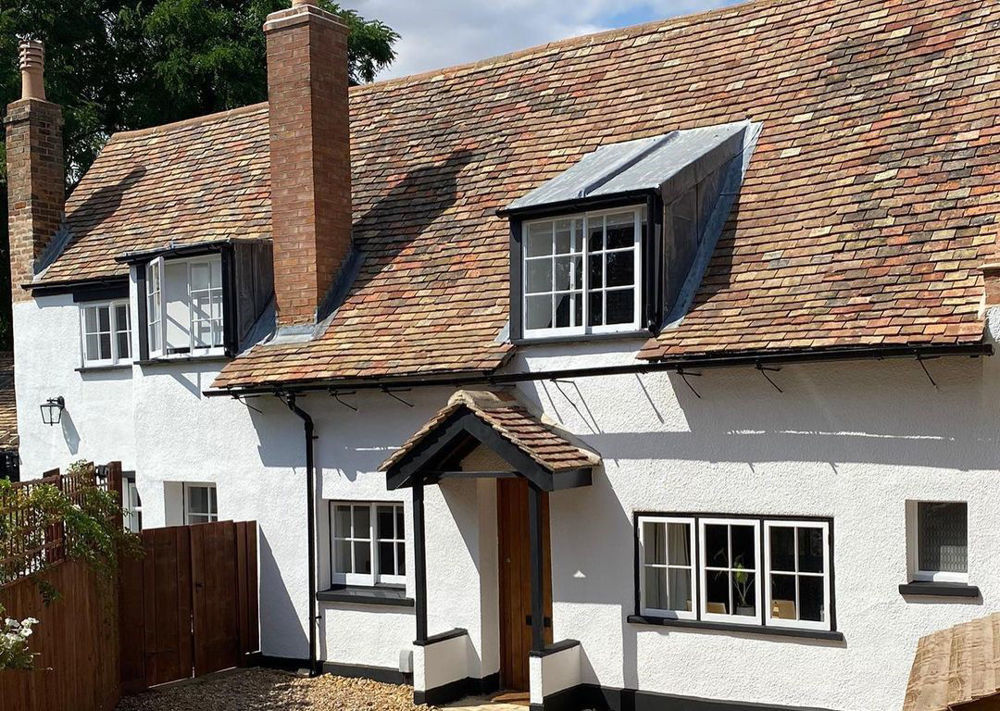
Why Would You Paint Render?
While some renders come pre-finished or pre-coloured, painting render is something that many homeowners decide to do both to new and older render. Many renders also do not come pre-finished, meaning that they are often left bare, leaving it looking tired and unfinished.
There are a number of reasons you may decide that painting render is the right thing for you, both to improve the aesthetic of the render but also its performance.
The trust is, the link between aesthetic appeal and the performance of the render go hand-in-hand. All renders that are non-silicone renders will absorb some level of moisture over-time. This is the case both with highly porous renders like lime render and renders that are designed for long-term durability like pebbledash. When moisture absorbs into the render, it saturates the material and can undergo what is known as a 'freeze-thaw cycle'. The moisture can freeze when temperatures drop causing it to expand as it becomes a solid. This expansion leads to movement within the render which can cause cracks and holes to open up. These defects allow more moisture to enter the wall, leading to further movement and resulting in a continuing cycle of damage.
This water entering the render can also lead to discolouration in the from organic growth such as mildew, lichens and algae that all require moisture in order to develop. Renders that have not been previously painted are particularly susceptible to this growth, although even painted renders can develop this if moisture is allowed to absorb into substrate.
Can Render Cause Damp Problems?
Here in the UK we are all too familiar with damp problems, due to both the level of rainfall we get and the way many properties are constructed. Damp can come in a range of forms including rising damp, penetrating damp & condensation. All of these forms can occur on rendered walls if the right conditions are present, which is why understanding them and how they can develop is crucial.
Rising damp is caused by an external source of moisture, where water from the ground is able to soak up through the bottom course of bricks and continues to rise up the walls of a property. This is why properties have what is known as a damp proof course (DPC) which creates a barrier on the bottom level of the property to prevent the bridging of moisture. Unfortunately if this DPC is not present, is failing or is bridged by render, rising damp can develop through the wall causing significant damage and highly saturated walls.
Penetrating damp much like rising damp is caused by an external source of moisture, however it is caused from rainfall that soaks into the external walls of a property. Penetrating damp is a universal problem that can affect any external wall that is not water repellent, including brick, stone, concrete and the majority of external renders. It can particularly be a problem for renders that have poor breathability such as pebbledash as they can trap this moisture when it enters the render and allow the wall to hold the damp within the fabric of the building. When the moisture enters the external wall it can soak straight through into internal walls, damaging plaster, paintwork and causing black mould.
Condensation is an internal source of moisture caused by a natural build up of humidity from day-to-day living such as washing machines, dryers and cooking. If a property suffers from poor ventilation or has poor breathability, this condensation will continue to develop within the walls leading to black mould and damp. Like penetrating damp, poor breathability of external walls either from the render itself or a coating on the render will exacerbate these problems.
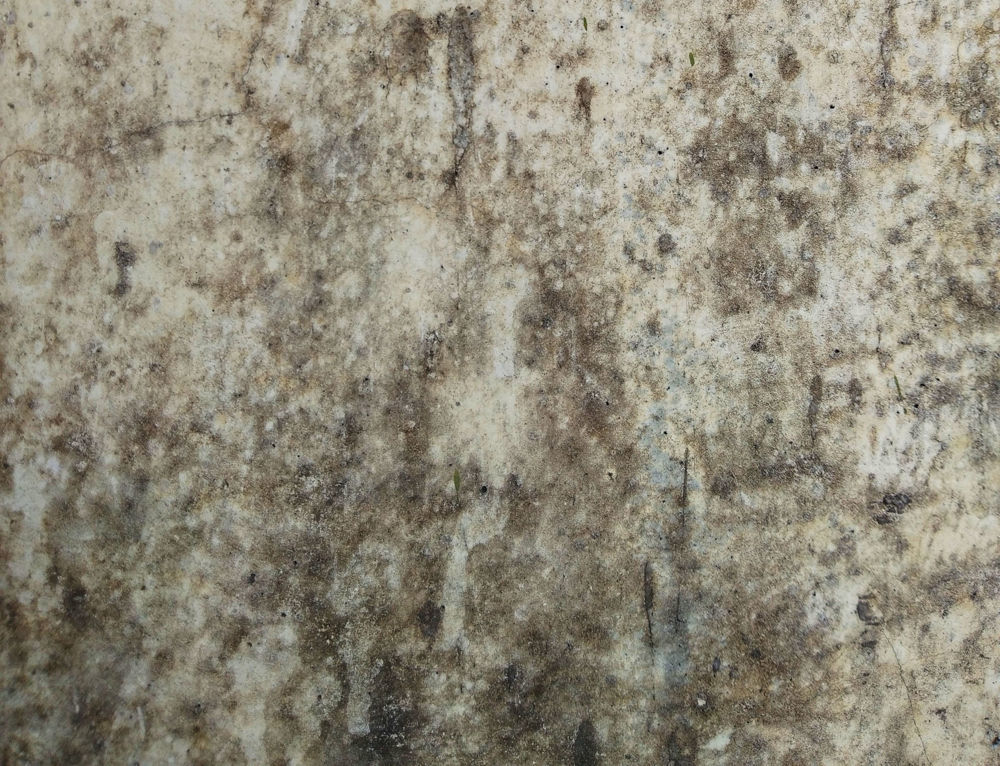
Damp, highly saturated walls will not only cause problems like mould but it can also be a precurser to heat loss. When exterior walls get wet, they transfer heat much quicker than dry walls.
Did you know? Damp content of 5% can lower the insulating properties of a material by 50%.
With 35% of heat loss in a property occuring from the walls, by having damp, wet walls you are likely to experience significant problems with heat loss, especially through the winter months.
What Paint Should You Paint Render With?
Masonry paint refers to exterior paints that are specially designed for use on exterior walled surfaces, including renders, brick or stone. These paints are firstly able to adhere to the various smooth and textured surfaces that you will find on exterior walls but also more importantly to deal the weather conditions that an exterior paint must endure. This is why masonry paints all come with some level of weather protection. Understanding exactly what is meant by weather protection is crucial to understanding the difference between masonry paints however.
There are numerous terms that are used to the ability for a paint to withstand moisture, including water repellent, waterproof, water resistant & weatherproof. The term 'waterproof' means that water cannot absorb into a substrate. This term is often overlapping with 'water repellent' which refers to the way in which waterproof masonry paints achieve this by repelling moisture from the surface. The terms 'weatherproof' or 'water resistant' are most commonly used when describing standard masonry paints that are not waterproof and will allow some level of moisture to soak into the paint film and through into the external wall. Much like renders, this ability to prevent water absorption is often down to the formulation of the paint.
There are four main types of masonry paint:
- Acrylic masonry paint - acrylic masonry paints get their name from the acrylic that is added to their formulations. These are what are known as standard masonry paints which 90% of masonry paints in the UK are. While they have low breathability and are not fully waterproof, they are widely available and offer an easy way to refresh an exterior wall. The lack of waterproofing properties can mean that eventually moisture will cause them to fail, as the breathability of acrylic masonry paints is not high enough to release this moisture before it causes problems. This is why they generally come with a lifespan anywhere from 12 months to 10 years, with some 10 year estimations being made when the paint subject to the best possible conditions.
- Silicone masonry paint - silicone-based masonry paints much like silicone renders are a highly advanced form of external finish which comes with high breathability and water repellency. By repelling rainfall and allowing condensation to escape through the paint film, some silicone masonry paints will never peel or flake as moisture is what causes this paint failure. This means silicone masonry paints can last anywhere from 10 years to in excess of 25 years. This does come at a higher cost than standard masonry paint, however the long-term value of not repainting the house every few years can mean silicone paints offer much better value for money.
- Oil-based masonry paint - otherwise known as pliolite, oil-based masonry paint is reserved solely for applying in conditions below 5°C or to prevent the paint from washing off straight after application due to rainfall. This is because it has a very low breathability due to the oil-based formulation and should not be used unless all other options are not possible, which it is sometimes used in commercial painting. On a domestic house, oil-based paint will unfortunately cause significant problems with damp due to the fact it won't allow moisture to escape the property.
- Limewash - limewash is a traditional form masonry coating that is an example of a mineral paint. Limewash is highly breathable, which is why it has been used on traditional heritage properties for hundreds of years, however it does have poor weather resistance which is why it often needs reapplying annually. For this reason, silicone masonry paint has replaced limewash as the go-to paint for traditional properties due to its high breathability.
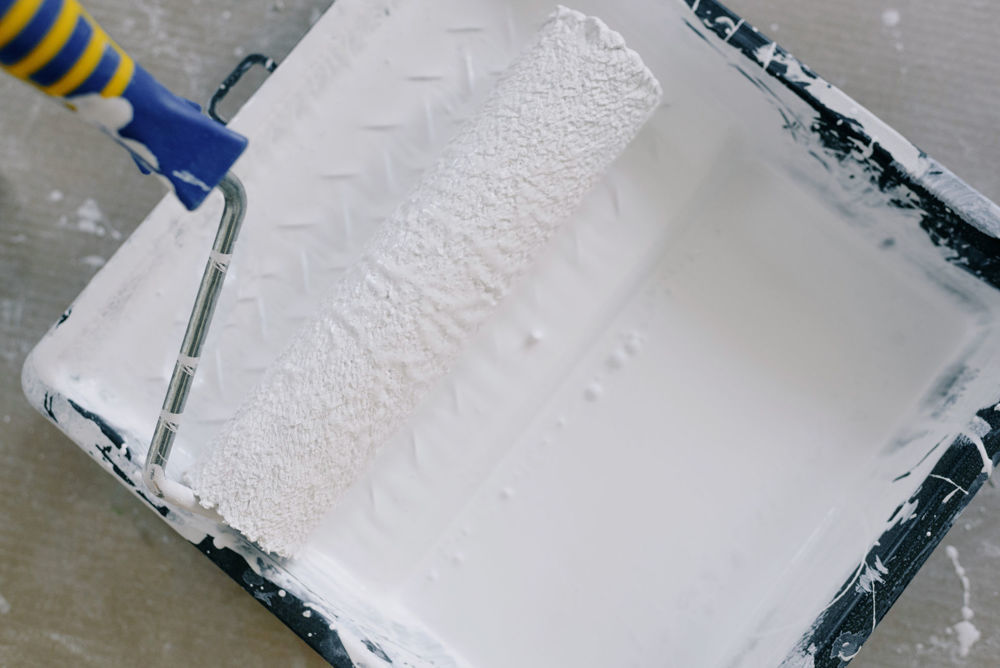
The Best Way To Paint Render
The two most important aspects of any masonry paint is breathability and the ability to prevent water absorption. This is why Emperor Paint silicone nano-technology was developed which lines the pores of render without sealing them, meaning while water is completely repelled by the super hydrophobic (ultra water repellent) properties, water vapour can naturally breathe out of the render. This keeps exterior walls dry, which prevents damage to the render, organic growth and discolouration.
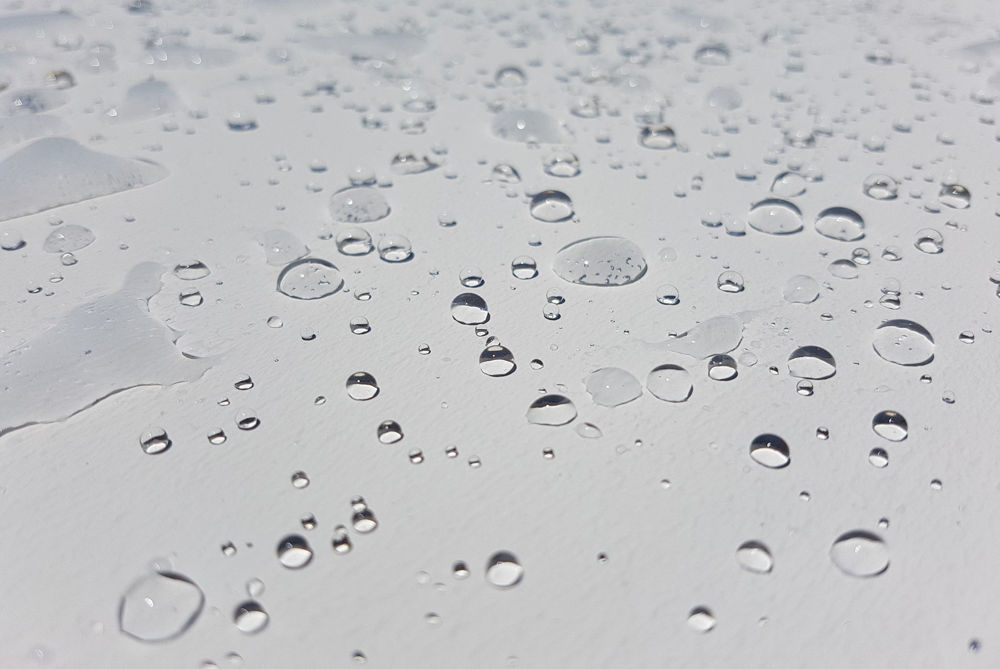
Emperor Masonry Paint was independently tested by a UKAS accredited laboratory in a 25-year accelerated weathering process, which found that after 25 years of heavy weathering it showed no signs of change in appearance or performance, meaning it will likely far exceed this 25 year lifespan. Due to this, Emperor Masonry Paint comes with a lifetime guarantee, ensuring its performance in all weather conditions for decades.
Emperor super hydrophobic technology can be used on any exterior walled surface, including all types of render. Crucially, unlike acrylic-based masonry paints it can be applied to silicone renders, as the silicone formulation of Emperor Masonry Paint is fully compatible with the silicone within the render. This not only means that the water repellent properties of the silicone render and maintained but also that the silicone render is protected from marking and discolouration due to Emperor Masonry Paint's self-cleaning properties. Many silicone renders develop large stains that streak down the wall, often looking to orange, rusty staining. This marking is due to algae and other organic growth that develops on the render.
Emperor Masonry Paint is self-cleaning for two reasons. Firstly dirt much like water is repelled from the surface and cannot attach itself to the render. Secondly, by preventing any water ingress, algae, moss and lichens do not have the moisture they require to bloom on the surface of exterior walls, keeping it clean and maintenance free.

KEY BENEFITS
- Super hydrophobic
- Highly breathable
- Self-cleaning
- Prevents penetrating damp
- Will never peel or flake
- Heat retaining
- UV resistant
- Comes with a 25+ year proven performance and a lifetime guarantee
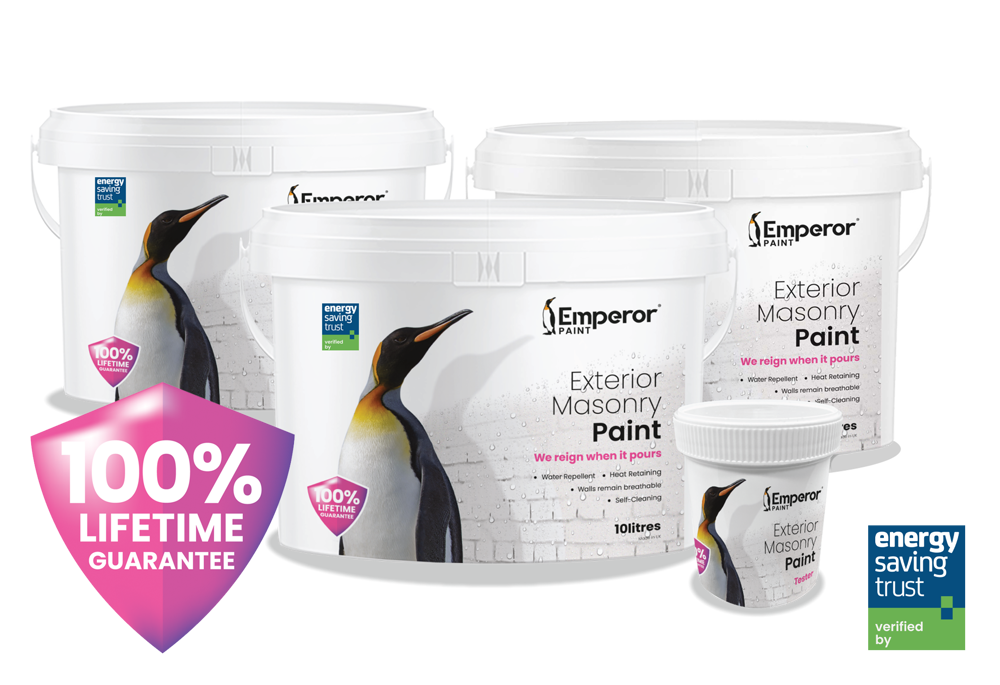
How To Paint Render
WHAT YOU WILL NEED
- Masonry paint
- Masonry roller (long-pile roller)
- Paint tray or scuttle
- Paint brush
- Dust brush
- 120 grit sandpaper
- Dust sheets
- Window film
- Masking tape
- Exterior filler & filling knife (may be required)
- Scraper (may be required)
PREPARATION
The preparation stage is the most important part of any decorating project. You need to ensure that the render you are painting is fully prepared ready to be painted or else you will not only achieve a poor finish but the paint could fail in some cases.
Begin by inspecting the render. If there are any loose or hollow parts of render that have detached from the wall, these must be repaired before you paint. Smaller defects such as cracks and holes can be filled using an exterior masonry filler and sanded back to your desired finish.
TIP: Have a textured finish that you need to match your repairs to? Emperor Textured Basecoat creates a range of textured finishes easily and effectively using a brush or textured roller. This allows you to mask any repairs and create a blemish-free, seamless textured finish without traditional render repairs methods that can be costly and time-consuming.
The next step is to clean the render which is crucial for ensuring the long-term performance of the paint. Start by removing surface level dirt and contamination using a pressure washer (on a low pressure), a hose-pipe or a stiff brush with hot water. This will also help to dislodge any loose or peeling paint, which can further be removing using a scraper until you have a firm edge where no more paint can be removed. Finally, apply a fungicidal cleaner such as Emperor Exterior Cleaner to any areas where you are suffering from algae, lichens or mildew. This kills any fungus on the wall, ensuring it cannot continue to grow underneath the paint once applied.
Finish by applying window film, masking tape and dust sheets to any areas you are not painting to ensure you won't accidentally cover any surfaces with paint splatter.
TIP: Cover any drain pipes with newspaper, for an easy and quick masking solution that will protect the plastic from paint splatter.
APPLICATION
All masonry paints have differing drying times, recoat times and coverages. It is important that whichever paint you are applying to your render that you follow the manufacturer's instructions.
If you are painting a render that has not been previously painted or is not pre-coloured, you must apply a primer before you paint. A previously painted or pre-coloured surface will not require a primer. A primer helps the paint adhere to the wall and also prevents the first coat from soaking into the porous render. If using Emperor Masonry Paint, ensure you use Emperor Exterior Primer as this contains the same highly breathable, super hydrophobic nano-technology as the paint. If you use a standard primer, this will hinder the full performance.
Before you apply a primer, ensure the render is dry and conditions are above 5°C. Apply one-coat of Emperor Exterior Primer to the wall at a coverage of 5-8m2 per litre, depending on the porosity of the render. We recommend using a long-pile roller or a masonry brush to apply the primer, which will allow you to easily and effectively apply to rough and semi-rough masonry surfaces. While the primer will dry in 1-2 hours, allow 5-6 hours at 20°C for the primer to be recoatable.
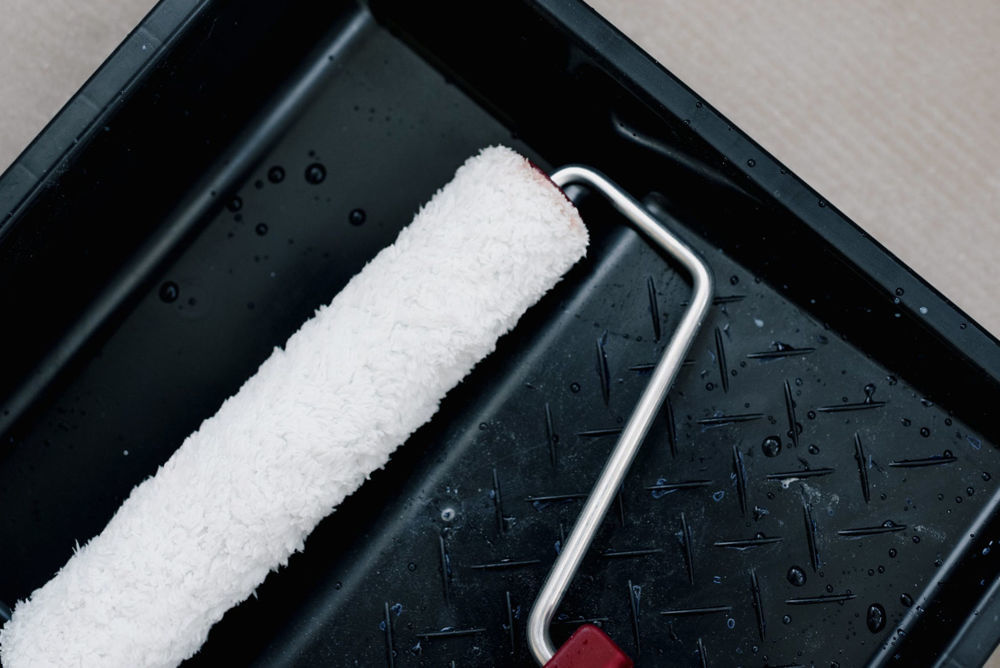
Once the primer has dried and the weather conditions are clear you can apply two-coats of Emperor Masonry Paint to the render. On smooth renders aim for a coverage of 5-6m2 per litre, while on textured renders such as pebbledash you can expect a coverage of 3m2 per litre due to the added surface area you are painting.
TIP: When using Emperor Masonry Paint you can dilute your first coat of paint down 10% with water to make application easier, but ensure you do not dilute your second coat.
You can apply masonry paint via brush, roller or airless spray machine, although a combination of long-pile roller and masonry brush gives you the best control to achieve a fantastic finish on render. Start by applying the paint to any edges using the masonry brush taking care to not create any drips over areas of over-application. Once you have cut-in, you can then use the roller to apply the paint to the rest of the wall. Starting at the top and working your way down in long straight motions is the best way to get a smooth, seamless finish.
While the paint will be touch dry and showerproof after 1-2 hours, allow the paint to dry for 6-8 hours at 20°C for it to be fully recoatable. Once the first coat is dry, repeat the process with the second coat and allow to dry.
The full beading effect of the paint may take up to 10 days to show, as it needs to cure in order to begin to repel water. In the meantime, Emperor Masonry Paint will be fully waterproof and won't uptake water.
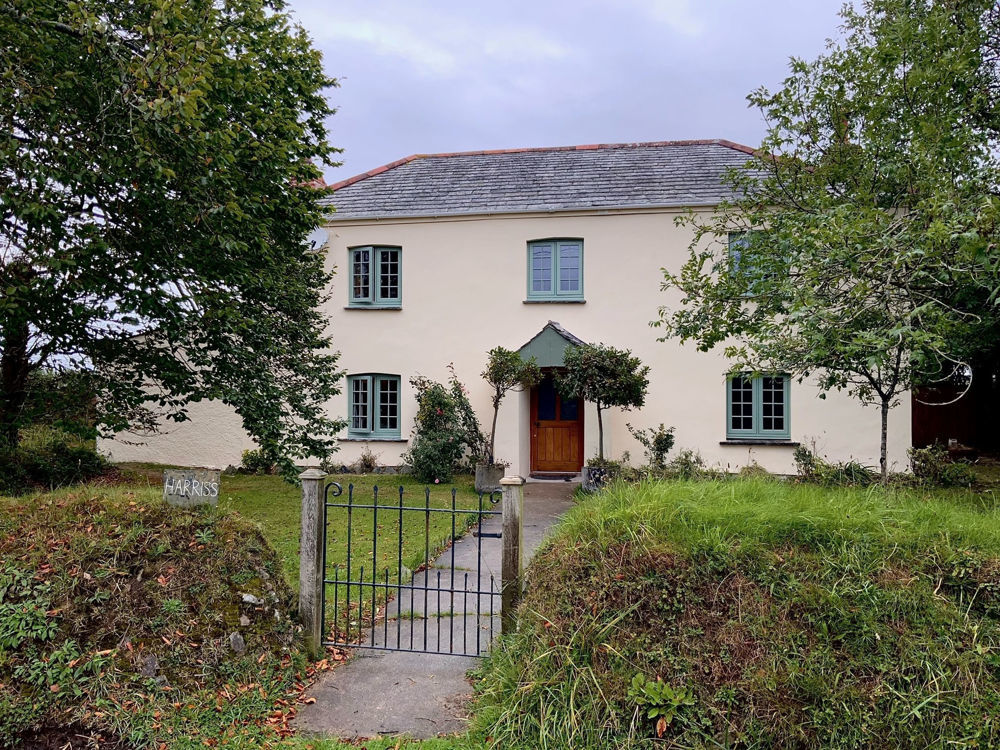
Frequently Asked Questions
Q. CAN I APPLY EMPEROR MASONRY PAINT TO ACRYLIC RENDER?
Yes, Emperor Masonry Paint is fully compatible with use on any render, including silicone render, acrylic render or sand and cement render. The reason it can be applied to any render is that it chemically bonds to the surface, meaning it will adhere to any rendered wall either with primer applied if it is bare render or straight to previously painted render.
If you tried applying an acrylic-based masonry paint to a silicone render, the water repellent properties of the silicone would repel the acrylic-based paint and cause it to simply run off.
Q. WHAT IS THE DIFFERENCE BETWEEN EMPEROR MASONRY PAINT AND OTHER SILICONE MASONRY PAINTS?
Just like all acrylic-based masonry paint are not made the same, silicone-based masonry paints are not made the same. While silicone masonry paints all contain water repellent properties, Emperor Masonry Paint has super hydrophobic properties which causes water to form 'beads' on the surface of render, which the simply run straight off. The breathability of silicone-based masonry paints also varies. Anything with an SD value of below 0.5 is considered breathable by British Standards, with the lower the number meaning the higher the breathability. Emperor Masonry Paint has an SD value of 0.03, giving it extremely high breathability in line with limewash.
Emperor Masonry Paint also contains high-quality resins within its formulation to give it superb opacity and other properties such as UV resistance.
Q. WHEN CAN I PAINT NEW RENDER?
You must ensure any render is touch dry before you can paint it. With new render, it can take up to 4 weeks for it to fully dry out. Due to the high breathability of Emperor Masonry Paint, any moisture that is deep within the render will naturally breathe out over-time, however if there are any dark or damp patches on the render allow these to dry before applying paint.
We hope we have answered any questions you may have had regarding painting render. If you have any other questions our team of experts are on hand to assist you no matter your problem. Contact them today by emailing info@emperorpaint.co.uk or calling 0161 509 9009. Alternatively, shop Emperor Masonry Paint today and get free delivery on all orders.

